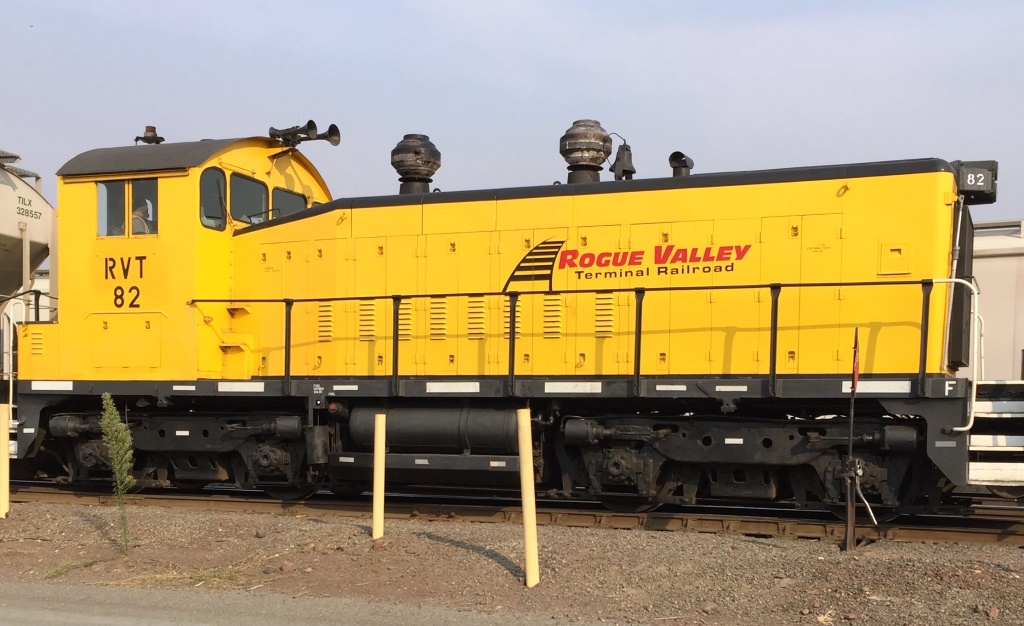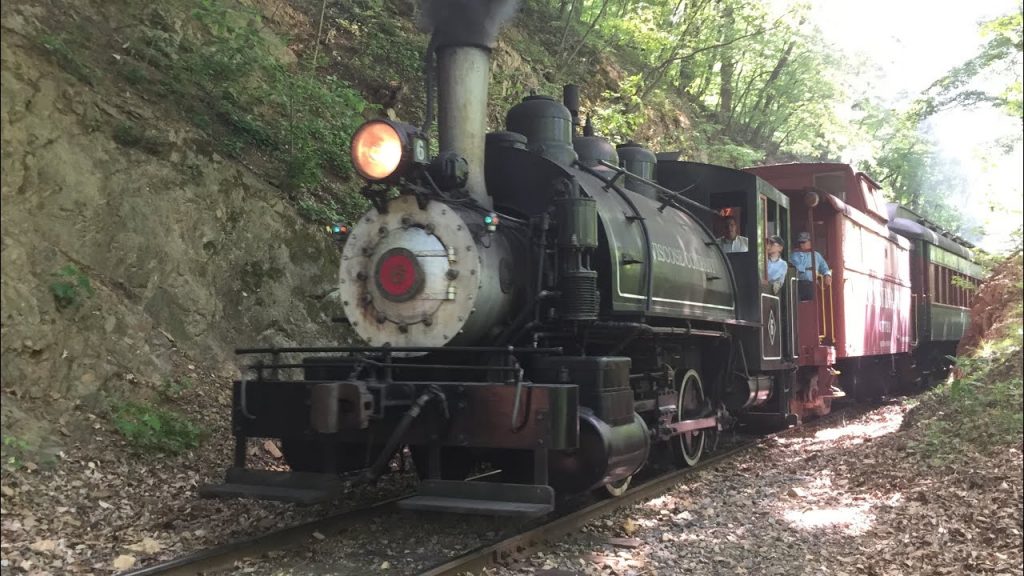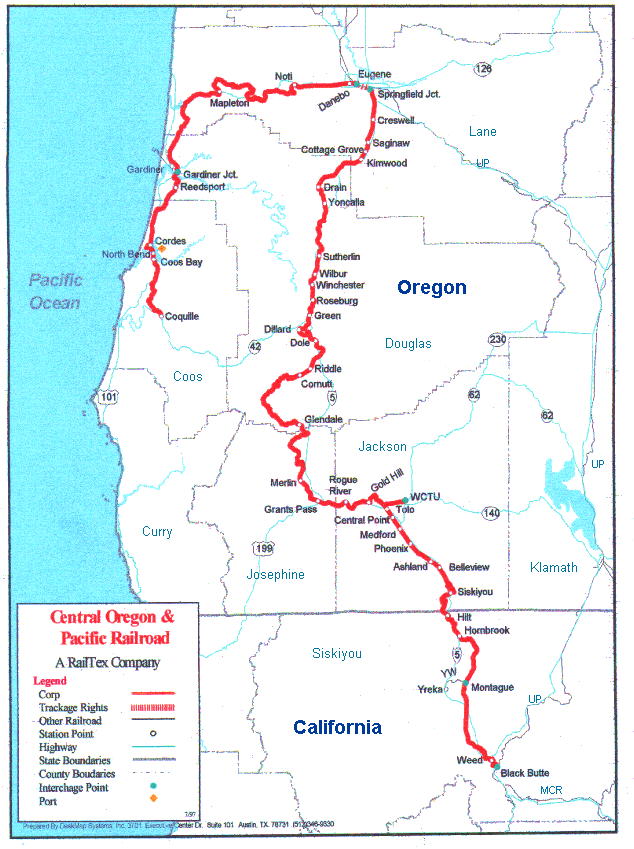The one track railroad that winds over up over the Siskiyou pass east of Mt. Ashland has had a long and eventful history. Built in the late 1800s it has had closures when the rail line was between owners, and such events as the last train robbery in the U.S. in 1923 and a fire in Tunnel 13 in 1986. Today it is again in regular use with a route that runs 302 miles from Weed, California to Eugene, Oregon. It is now CORP, which stands for Central Oregon Pacific Railroad. And if you are already wondering why it should be CORPnot be CORP it is because the’ R’ is taken from Oregon, and not Railroad.
I recently moved from my home of 21 years in southern Ashland to Maple Ridge Senior Living a the north end of town and was delighted to find that my apartment overlooked the railroad track. If it were a busy line with many trains per day I would not have felt the same. But the schedule now is not even a train a day, so its appearance is a welcome event.
The first real serious train I saw (after seeing one with a few empty flatbeds) was on August 9 at 9:30PM on a moonless night with brilliant stars and Orion right overhead. It had at least 21 cars and no flatbeds. It honked its way up the valley and appeared looking like a fierce dragon all lit up and blowing something. A few nigh later I took this photo, but it does not do justice to the event wthout the ambience and especially the sounds – the roar of the engine and the blare of the horn.

I was instantly smitten, and realized that I realized that I knew nothing about it. Nor did anyone else I knew. Yet we had been stopping for trains for years at crossings in Ashlsnd for years. Next morning I started thinking about learning more.
First I looked up the history, which goes back well over a century to 1887 when the line was probably completed to the California border. I’ll skip to the present. The train has been bought and several times and is now owned by California Oregon and Pacific Railroad (CORP) and the line covers 300 + miles from Weed, CA to Eugene, OR. Since 2015, when it reopened after a closure of several years there are supposedly two trains/day, but in the month I have been watching, that is not happening, as some days there are no trains. All traffic has been after dark, usually a few hours before sunrise and after dusk. I sent a question about this change of schedule to ‘Since You Asked” in our daily newspaper and hope I get an answer soon. It makes it hard to see what is going on, trainwise! The reduction in trains could be because of our failing economy in the worldwide COVID 19 pandemic. The cargo was reportedly mostly wood products, cement, fertilizer, feed and propane. Flatcars are a part of these trains, when there is cargo too large or cumbersome to load in boxcars.
Two events in its history have made headlines. One was the Tunnel 13 train robbery in 1923 which was the last such event in the U.S. Three local brothers carried it out, Roy and Ray (twins) and HughD’Autremont. During a botched attempt theycommitted4 murders but found no loot. The victims were 3 trainmen and a mail clerk. The brothers were not captured until several years later, when they were tried and sentenced to life imprisonment. All were paroled, however, after serving partial sentences. There is a very thorough account by Paul Fattig in the Mail Tribune by googling “The Last Great Train Robbery”.
The other event was a fire in Tunnel 13 near Interstate 5’s Siskiyou Summit in 2003. According to a Mail Tribune article at the time it was likely started by transients or trespassers, burned enough old wooden joists to cause rock and debris to pile up to 8 feet in spots inside the tunnel.
Recently an Ashland couple, Peter and Linda Kreisman, when pursuing their hobby of searching for abandoned tunnels in the Siskiyous, found the northern entrance to Buck Rock tunnel, an unfinished passage through the Siskiyous. It was dug by Chinese workers in 1883, but abandoned a year later when the money ran out. An article on these abandoned tunnels was printed in the July 24 Mail Tribune.




